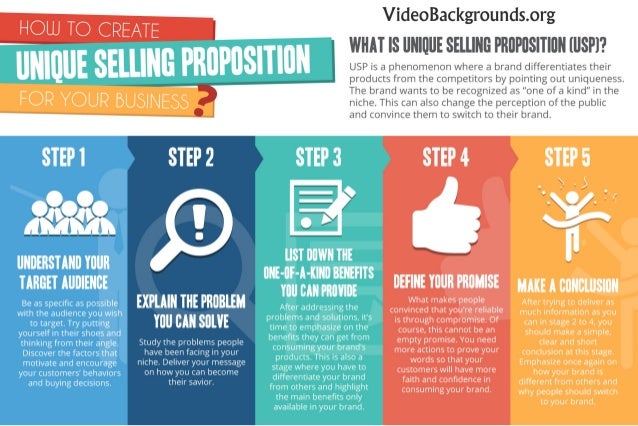The Art of Persuasion: Understanding the Key to Selling Your Idea
When it comes to selling an idea to a company, understanding the organization’s needs and goals is crucial. Before pitching your idea, it’s essential to research the company’s current projects, challenges, and values to tailor your pitch. This will help you identify potential pain points and areas where your idea can provide a solution. By doing so, you’ll be able to demonstrate how your idea aligns with the company’s objectives and show that you’ve taken the time to understand their needs.
One effective way to research a company is to review their website, social media, and recent news articles. This will give you a sense of their current initiatives, challenges, and values. You can also use this information to identify key decision-makers and their roles within the organization. Additionally, consider reaching out to current or former employees to gain insights into the company’s culture and priorities.
Another important aspect of understanding the company’s needs is to identify their key performance indicators (KPIs). What metrics do they use to measure success? What are their goals and objectives? By understanding these KPIs, you can tailor your pitch to show how your idea can help the company achieve its goals. For example, if the company is focused on increasing revenue, you can highlight how your idea can help drive sales or reduce costs.
By taking the time to research and understand the company’s needs, you’ll be able to create a pitch that resonates with the decision-makers. This will help you build credibility and establish trust, which is essential for selling an idea to a company. Remember, the key to selling an idea is to show how it can provide value to the organization. By understanding the company’s needs and goals, you’ll be able to create a compelling pitch that demonstrates the value of your idea.
Developing a Compelling Value Proposition: What Sets Your Idea Apart
A unique value proposition is essential to selling an idea to a company. It highlights the benefits and advantages of your idea, setting it apart from others. To develop a compelling value proposition, you need to identify your idea’s strengths and weaknesses. Start by asking yourself what problem your idea solves, and how it solves it better than existing solutions. Be specific about the benefits your idea offers, such as cost savings, increased efficiency, or improved customer satisfaction.
When communicating your value proposition, focus on the benefits rather than the features of your idea. Instead of listing off a bunch of technical specifications, explain how your idea will make a positive impact on the company. Use language that resonates with the decision-maker, such as “our idea will increase revenue by 20% through improved sales efficiency” or “our solution will reduce costs by 15% through automation.”
It’s also important to anticipate potential objections and address them in your value proposition. For example, if you know that the company is concerned about the cost of implementing your idea, highlight any cost savings or return on investment that your idea offers. By addressing potential concerns upfront, you can build trust and credibility with the decision-maker.
When developing your value proposition, consider the following tips:
- Focus on the benefits, not the features
- Be specific about the results your idea will deliver
- Use language that resonates with the decision-maker
- Anticipate and address potential objections
By developing a compelling value proposition, you can effectively communicate the value of your idea and set it apart from others. This will help you build a strong case for why your idea is the best solution for the company’s needs.
Crafting a Clear and Concise Pitch: The Elevator Pitch
A clear and concise pitch is essential when selling an idea to a company. The elevator pitch is a brief, 30-second to 1-minute summary of your idea that can be delivered in a short amount of time. It’s called an elevator pitch because it should be short enough to be delivered during an elevator ride. The goal of the elevator pitch is to spark interest and generate excitement about your idea.
To craft a clear and concise pitch, start by identifying the key elements of your idea. What problem does it solve? What benefits does it offer? What sets it apart from other solutions? Use simple language and avoid jargon or technical terms that may be unfamiliar to your audience. Focus on the benefits and results of your idea, rather than its features or technical specifications.
Here are some tips for crafting a clear and concise pitch:
- Keep it short and sweet: aim for 30 seconds to 1 minute
- Focus on the benefits and results of your idea
- Use simple language and avoid jargon or technical terms
- Practice your pitch until it feels natural and comfortable
When delivering your elevator pitch, be sure to make eye contact, speak clearly and confidently, and use body language to convey enthusiasm and excitement. Remember, the goal of the elevator pitch is to spark interest and generate excitement about your idea. By crafting a clear and concise pitch, you can effectively communicate the value of your idea and set yourself up for success.
For example, here’s an example of an elevator pitch for a new product idea:
“Our product is a innovative solution that helps companies reduce energy costs by up to 20%. It’s easy to install, requires minimal maintenance, and pays for itself in just a few months. We believe it has the potential to revolutionize the way companies think about energy efficiency.”
This pitch is short, clear, and concise, and it effectively communicates the benefits and value of the product idea. By crafting a pitch like this, you can effectively sell your idea to a company and set yourself up for success.
Building a Strong Relationship with the Decision-Maker: Networking and Building Trust
Building a strong relationship with the decision-maker is crucial when selling an idea to a company. A strong relationship can help establish trust, credibility, and a deeper understanding of the company’s needs and goals. Networking and building trust are essential components of building a strong relationship with the decision-maker.
Networking involves establishing connections with key stakeholders, including the decision-maker, and building relationships with them. This can be done through various means, such as attending industry events, joining professional organizations, or connecting with people on LinkedIn. By building a network of contacts, you can gain valuable insights into the company’s needs and goals, as well as establish a reputation as a knowledgeable and trustworthy professional.
Building trust involves establishing a rapport with the decision-maker and demonstrating your expertise and credibility. This can be done by providing valuable information, offering solutions to problems, and showing a genuine interest in the company’s success. By building trust, you can establish a strong foundation for a successful pitch and increase the likelihood of a positive outcome.
Here are some tips for building a strong relationship with the decision-maker:
- Establish a connection with the decision-maker through networking
- Build trust by providing valuable information and demonstrating expertise
- Show a genuine interest in the company’s success
- Be responsive and follow up on any commitments or requests
By building a strong relationship with the decision-maker, you can increase the chances of a successful pitch and establish a long-term partnership with the company. Remember, building a strong relationship takes time and effort, but it is essential for achieving success when selling an idea to a company.
For example, let’s say you’re trying to sell an idea to a company that specializes in sustainable energy solutions. You’ve done your research and know that the company is looking for innovative solutions to reduce their carbon footprint. You’ve also established a connection with the decision-maker through LinkedIn and have built a rapport with them. By building trust and establishing a strong relationship, you can increase the chances of a successful pitch and establish a long-term partnership with the company.
Anticipating and Addressing Concerns: Handling Objections and Questions
When selling an idea to a company, it’s essential to anticipate and address concerns that the decision-maker may have. This involves handling objections and questions in a clear and confident manner. By doing so, you can build trust and credibility with the decision-maker and increase the chances of a successful pitch.
Objections and questions can arise from various sources, including concerns about the idea’s feasibility, cost, or potential impact on the company. To handle these objections and questions effectively, it’s crucial to be prepared and have a clear understanding of the company’s needs and goals.
Here are some tips for handling objections and questions:
- Anticipate common objections and questions and prepare responses in advance
- Listen carefully to the decision-maker’s concerns and respond thoughtfully
- Provide clear and concise information to address concerns and objections
- Use data and evidence to support your responses and build credibility
For example, let’s say the decision-maker expresses concern about the cost of implementing your idea. You could respond by providing a detailed breakdown of the costs involved and highlighting the potential return on investment. By addressing the concern in a clear and confident manner, you can build trust and credibility with the decision-maker and increase the chances of a successful pitch.
Additionally, it’s essential to stay calm and composed when handling objections and questions. Avoid becoming defensive or dismissive, as this can damage your credibility and relationships with the decision-maker. Instead, focus on providing clear and concise information and addressing concerns in a professional and respectful manner.
By anticipating and addressing concerns, you can build trust and credibility with the decision-maker and increase the chances of a successful pitch. Remember, handling objections and questions is an essential part of the pitching process, and being prepared can make all the difference.
Creating a Professional and Engaging Presentation: Visual Aids and Storytelling
A professional and engaging presentation is crucial when selling an idea to a company. Visual aids and storytelling techniques can help make your pitch more engaging and memorable. By incorporating these elements into your presentation, you can capture the decision-maker’s attention and convey your idea in a clear and compelling way.
Visual aids such as slides, videos, and props can help illustrate your idea and make it more tangible. They can also help to break up the presentation and add visual interest. When using visual aids, make sure to keep them simple and easy to understand. Avoid cluttering the slides with too much information or using fonts that are difficult to read.
Storytelling is another effective way to make your pitch more engaging and memorable. By telling a story, you can convey your idea in a more relatable and human way. Use anecdotes, examples, and metaphors to bring your idea to life and make it more accessible to the decision-maker.
Here are some tips for creating a professional and engaging presentation:
- Use visual aids to illustrate your idea and make it more tangible
- Keep your visual aids simple and easy to understand
- Use storytelling techniques to make your pitch more relatable and human
- Practice your presentation to ensure it is smooth and confident
For example, let’s say you’re pitching an idea for a new product. You could use a video to demonstrate the product’s features and benefits. You could also use storytelling techniques to convey the product’s value proposition and how it can solve a specific problem for the company.
By incorporating visual aids and storytelling techniques into your presentation, you can make your pitch more engaging and memorable. Remember, the goal of the presentation is to convey your idea in a clear and compelling way and to persuade the decision-maker to adopt your idea.
Following Up and Following Through: After the Pitch
After the pitch, it’s essential to follow up and follow through on any next steps or actions that were discussed. This shows that you’re committed to the idea and willing to put in the effort to make it happen. It also helps to build trust and credibility with the decision-maker.
One way to follow up is to send a thank-you note or email to the decision-maker. This should be done within 24 hours of the pitch and should reiterate your interest in the idea and your appreciation for the decision-maker’s time. You can also use this opportunity to provide any additional information that was requested during the pitch.
Another way to follow up is to schedule a follow-up meeting or call to discuss the next steps. This can be done a week or two after the pitch and should be used to provide an update on any progress that’s been made. It’s also an opportunity to address any concerns or questions that the decision-maker may have.
Here are some tips for following up and following through:
- Send a thank-you note or email within 24 hours of the pitch
- Schedule a follow-up meeting or call to discuss next steps
- Provide any additional information that was requested during the pitch
- Address any concerns or questions that the decision-maker may have
For example, let’s say you pitched an idea for a new product to a company. You could send a thank-you note or email to the decision-maker, reiterating your interest in the idea and your appreciation for their time. You could also schedule a follow-up meeting or call to discuss the next steps and provide any additional information that was requested.
By following up and following through, you can build trust and credibility with the decision-maker and increase the chances of a successful outcome. Remember, the follow-up is just as important as the pitch itself, so make sure to put in the effort to make it happen.
Learning from Rejection: How to Use Feedback to Improve Your Pitch
Rejection is an inevitable part of the pitching process. However, it’s not the end of the world. In fact, rejection can be a valuable learning experience that can help you improve your pitch and increase your chances of success in the future.
When you receive feedback from a decision-maker, it’s essential to listen carefully and take it constructively. Don’t get defensive or dismissive, as this can damage your relationship with the decision-maker and make it harder to get feedback in the future.
Instead, use the feedback to refine and improve your pitch. Ask questions to clarify any concerns or issues that the decision-maker may have had, and use this information to make adjustments to your pitch.
Here are some tips for learning from rejection and using feedback to improve your pitch:
- Listen carefully to the feedback and take it constructively
- Ask questions to clarify any concerns or issues
- Use the feedback to refine and improve your pitch
- Don’t get defensive or dismissive
For example, let’s say you pitched an idea for a new product to a company, but the decision-maker rejected it. Instead of getting discouraged, you could ask for feedback on what you could have done differently. You could also use this opportunity to ask questions and clarify any concerns or issues that the decision-maker may have had.
By learning from rejection and using feedback to improve your pitch, you can increase your chances of success in the future. Remember, pitching is a process, and it may take several attempts before you get it right. But with persistence and a willingness to learn, you can develop a pitch that will persuade decision-makers and help you achieve your goals.






